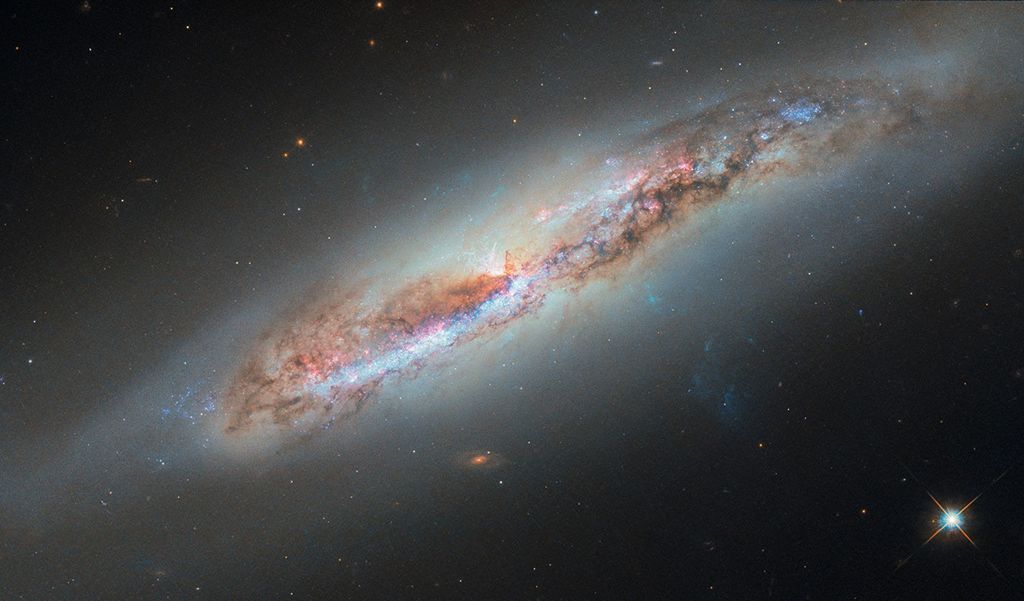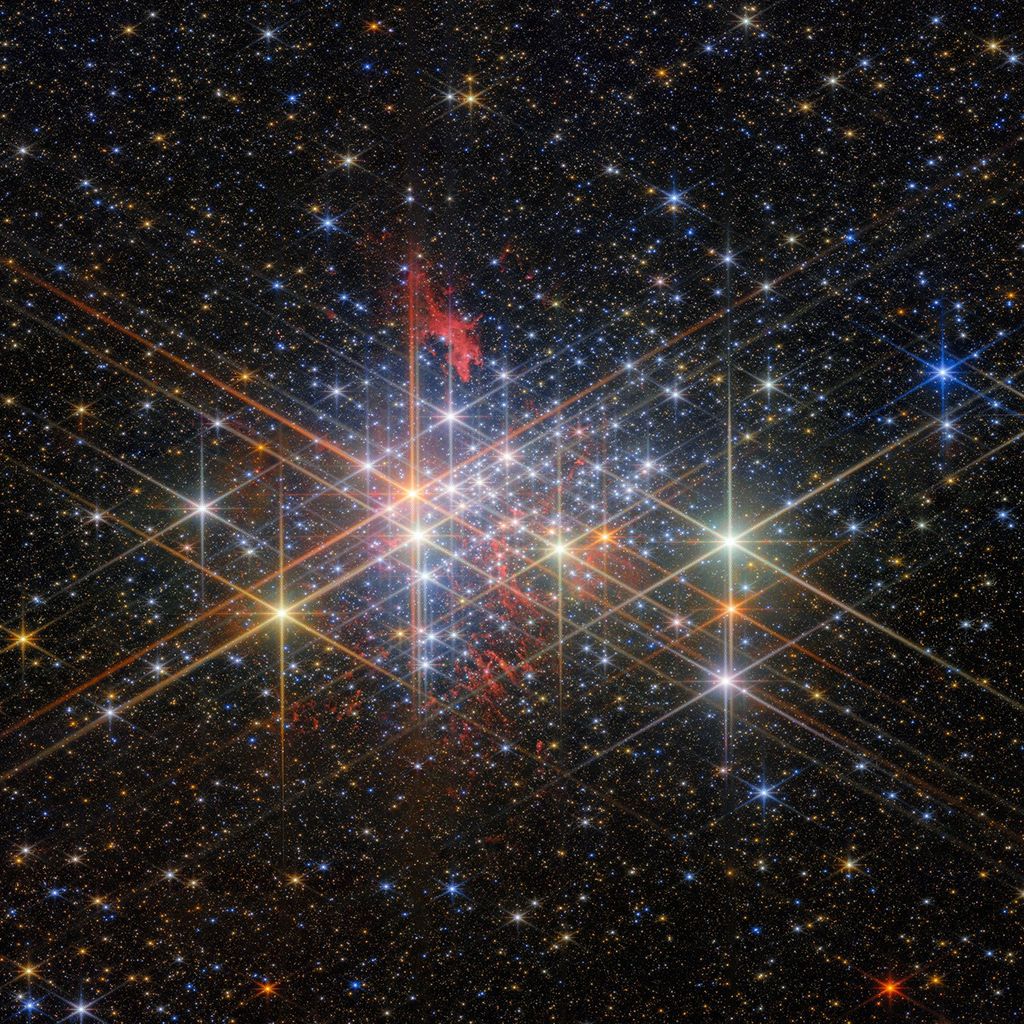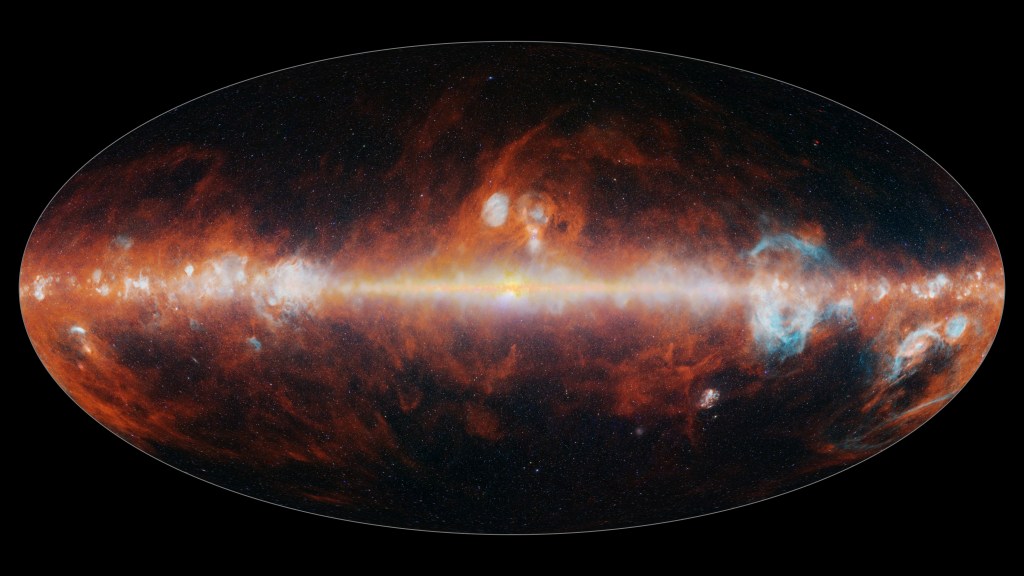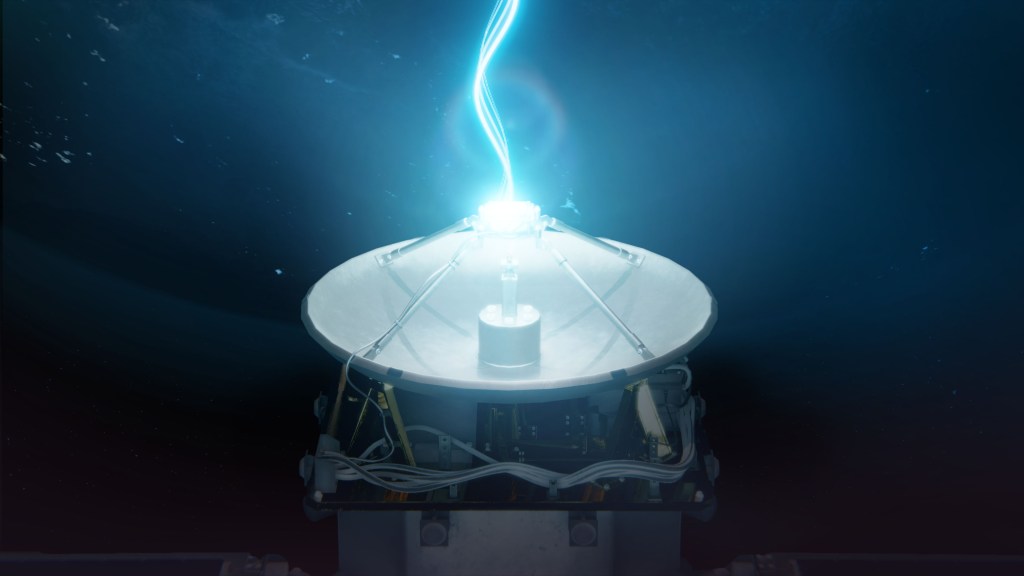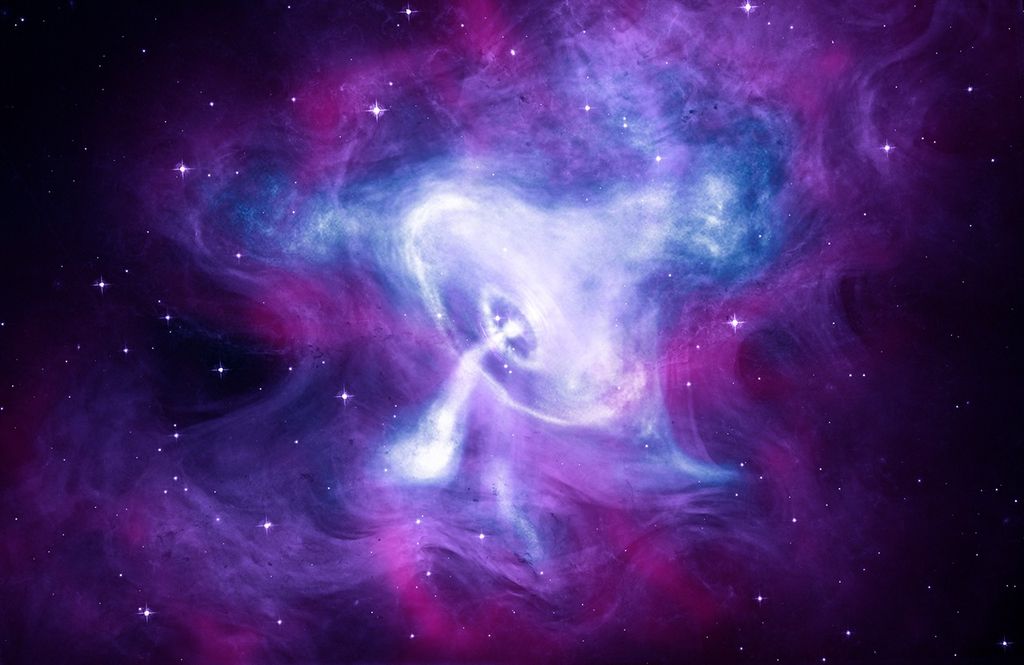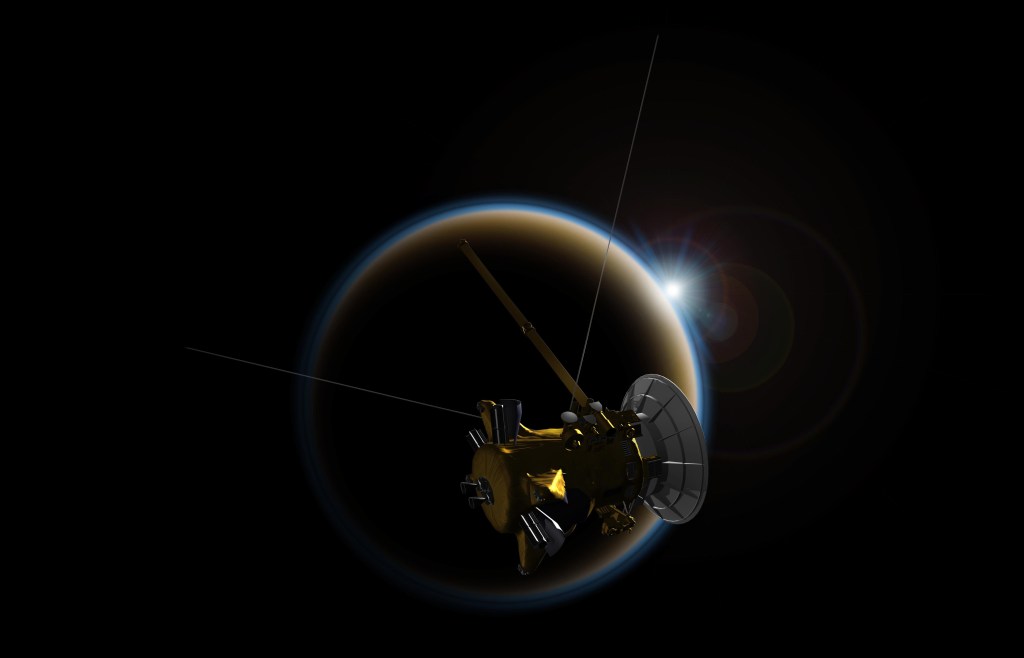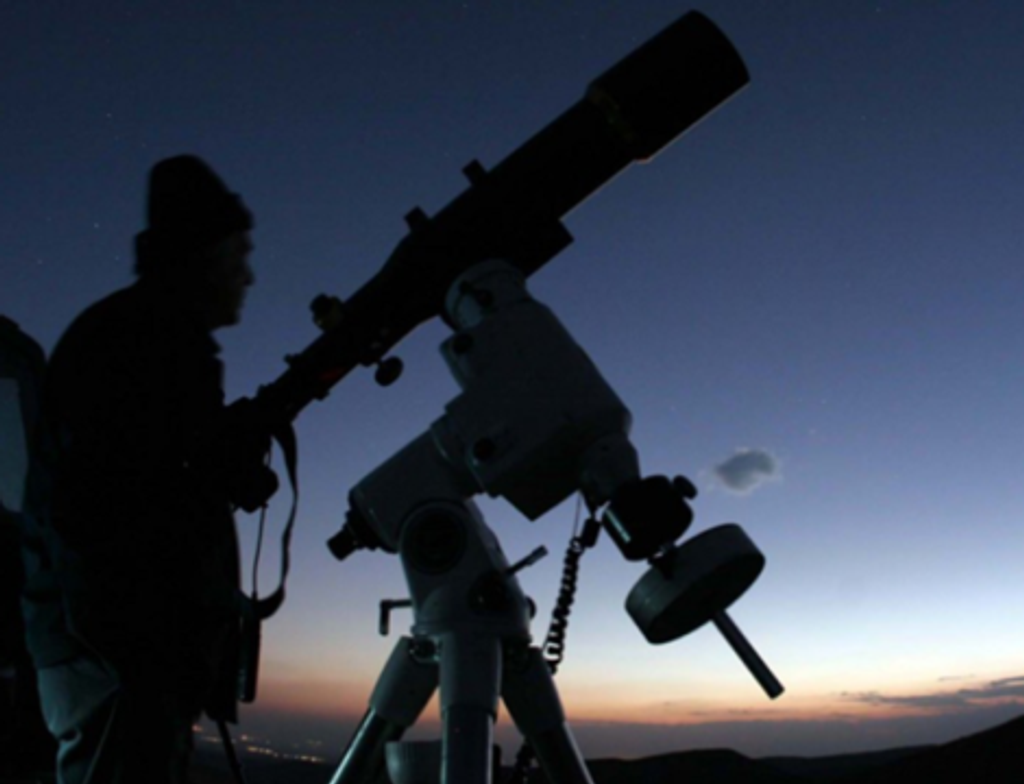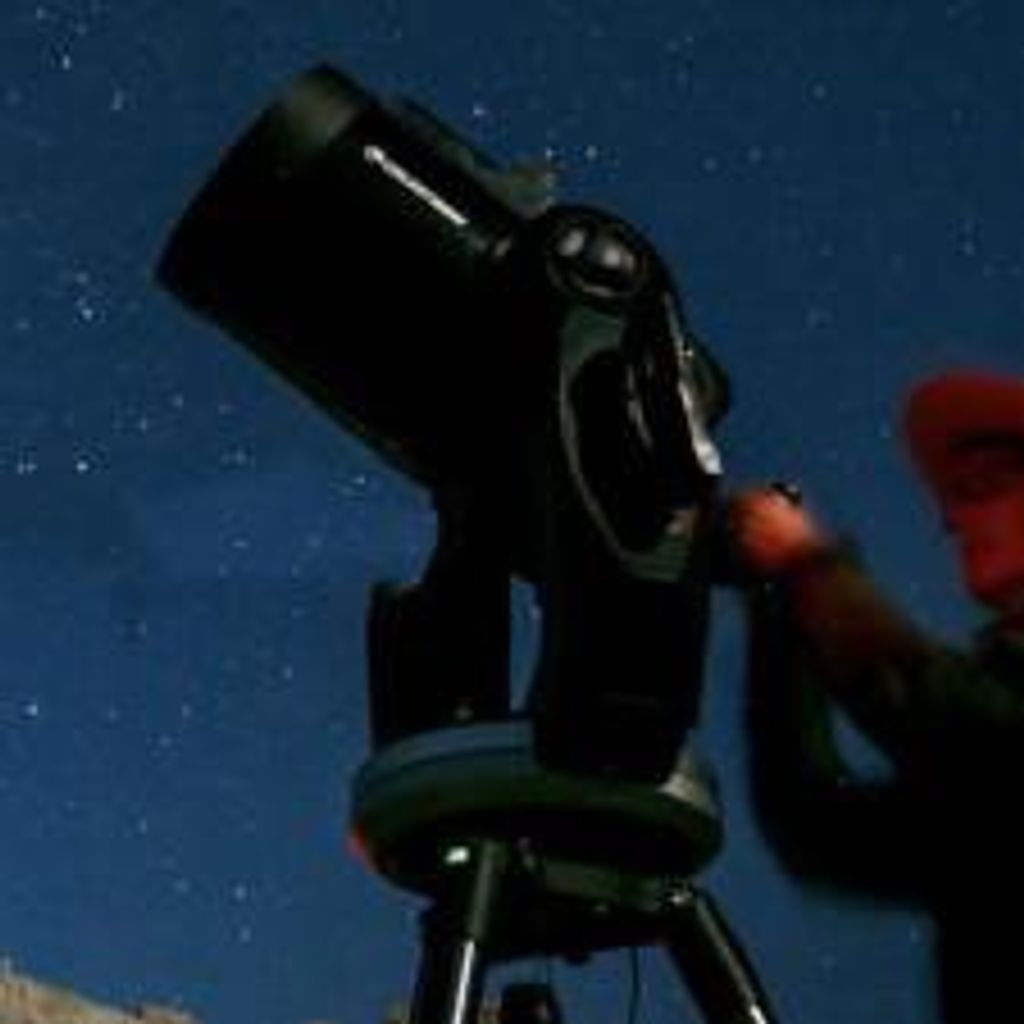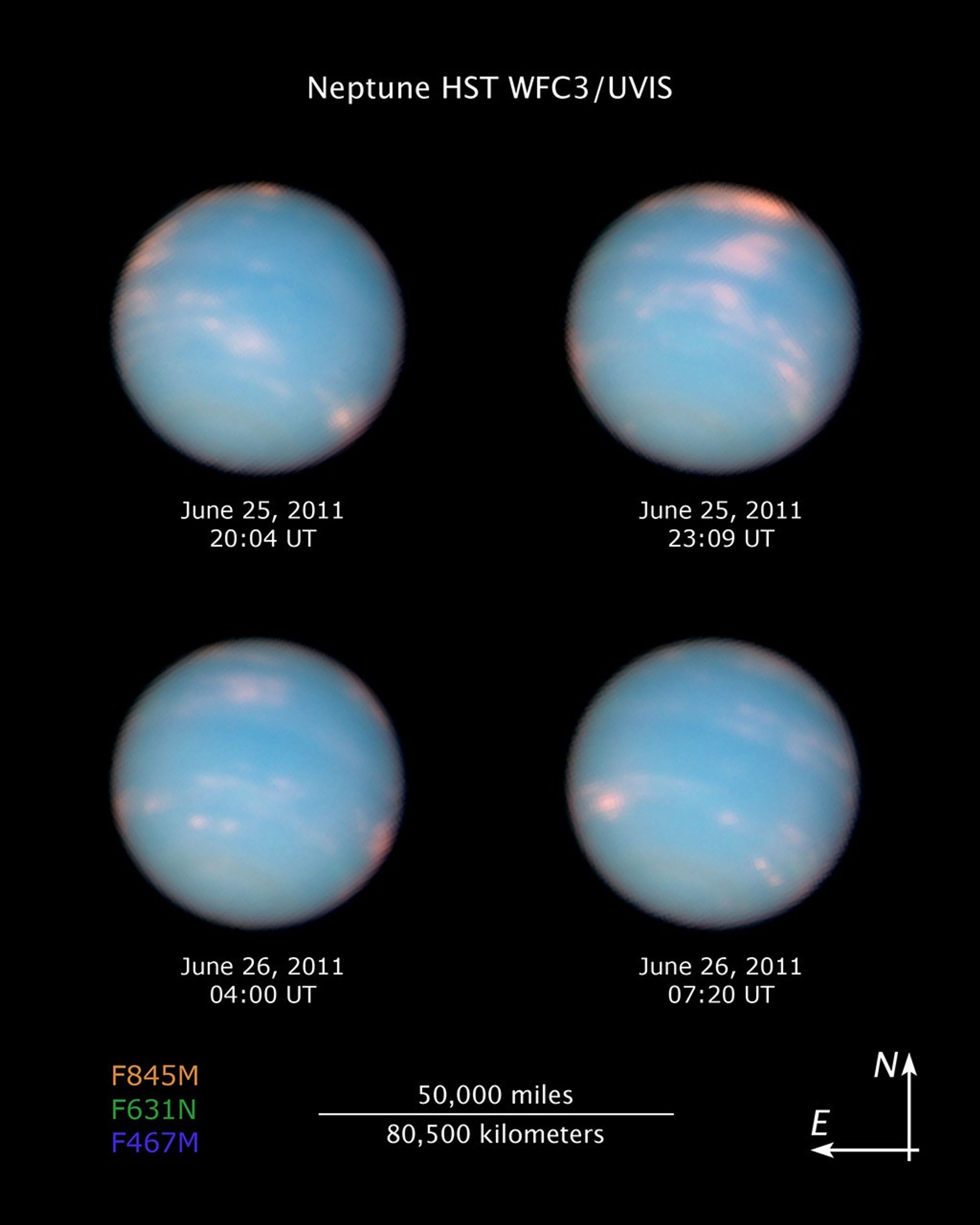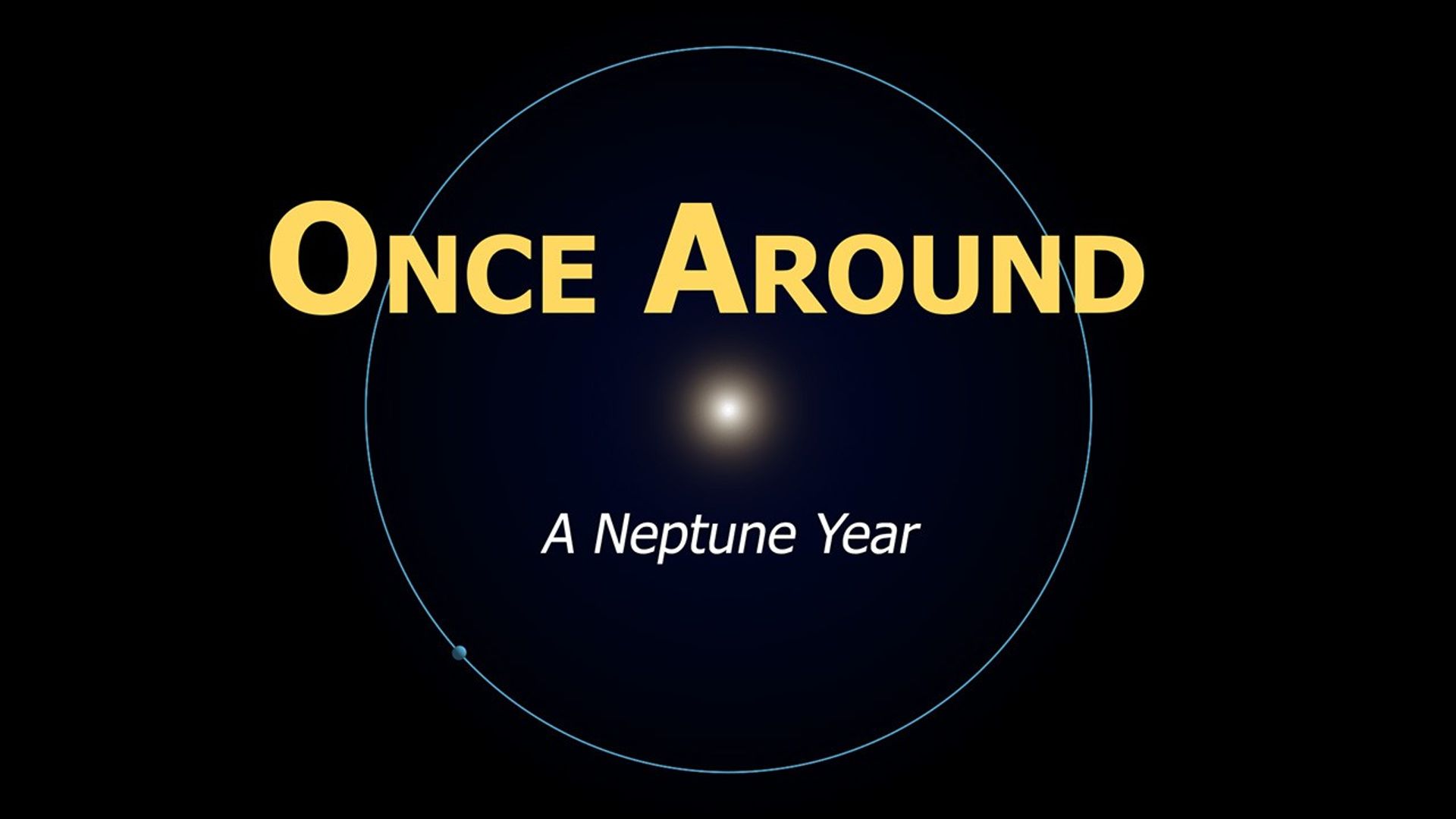1 min read
Inner Moons of Neptune
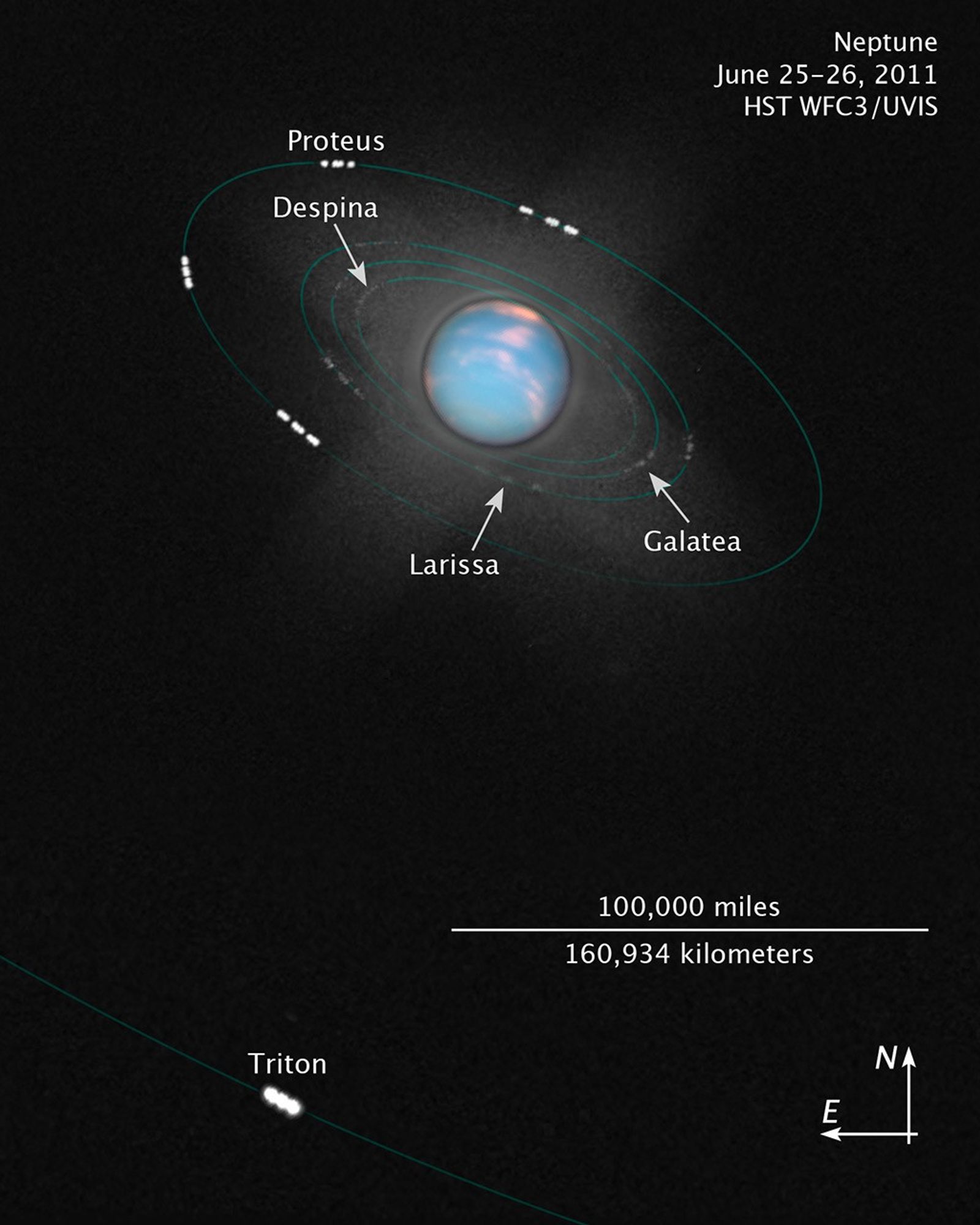
About the Object
- DistanceDistanceThe physical distance from Earth to the astronomical object. Distances within our solar system are usually measured in Astronomical Units (AU). Distances between stars are usually measured in light-years. Interstellar distances can also be measured in parsecs.The semi-major axis of Neptune's orbit about the Sun is 30.06 astronomical units (roughly 2.8 billion miles or 4.5 billion kilometers).
- DimensionsDimensionsThe physical size of the object or the apparent angle it subtends on the sky.Neptune has a diameter of roughly 30,800 miles (49,600 kilometers) at the equator.
About the Data
- Data DescriptionData DescriptionProposal: A description of the observations, their scientific justification, and the links to the data available in the science archive.
Science Team: The astronomers who planned the observations and analyzed the data. "PI" refers to the Principal Investigator.This image was created from HST data from proposal 12675: K. Noll, Z. Levay, M. Livio, C. Christian, H. Bond, L. Frattare, M. Mutchler, T. Borders, and W. Januszewski (Hubble Heritage Team/STScI). - InstrumentInstrumentThe science instrument used to produce the data.HST>WFC3/UVIS
- Exposure DatesExposure DatesThe date(s) that the telescope made its observations and the total exposure time.June 25-26, 2011, Exposure Time: 36 minutes
- FiltersFiltersThe camera filters that were used in the science observations.F467N (46nm), F631N (63nm), and F845M (84nm)
- Object NameObject NameA name or catalog number that astronomers use to identify an astronomical object.Neptune
- Object DescriptionObject DescriptionThe type of astronomical object.Planet
- Release DateJuly 12, 2011
- Science ReleaseNeptune Completes Its First Circuit Around The Sun Since Its Discovery
- Credit

This image is a composite of many separate exposures made by the WFC3/UVIS instrument on the Hubble Space Telescope using three different filters. The color results from assigning different hues (colors) to each monochromatic image. In this case, the assigned colors are: Blue: F467N (46nm) Green: F631N (63nm) Red/orange: F845M (84nm)
Related Images & Videos

Neptune's Anniversary Portraits
Today, Neptune has arrived at the same location in space where it was discovered nearly 165 years ago. To commemorate the event, NASA's Hubble Space Telescope has taken these "anniversary pictures" of the blue-green giant planet. Neptune is the most distant major planet in our...

Sky & Telescope: Path of Neptune in 2011
Neptune's position in the sky is plotted on this star map, along with the 1846 predicted positions of its location, and where it was eventually discovered. The blue planet resides in the constellation Aquarius for the rest of 2011. The apparent change of direction of Neptune's...

Hubble Observes Changes in Neptune's Atmosphere
Our solar system's most distant major planet, Neptune, has arrived at the same location in space where it was first discovered 165 years ago. To commemorate the event, NASA's Hubble Space Telescope has taken images of the blue-green giant planet. Neptune was first discovered 165...
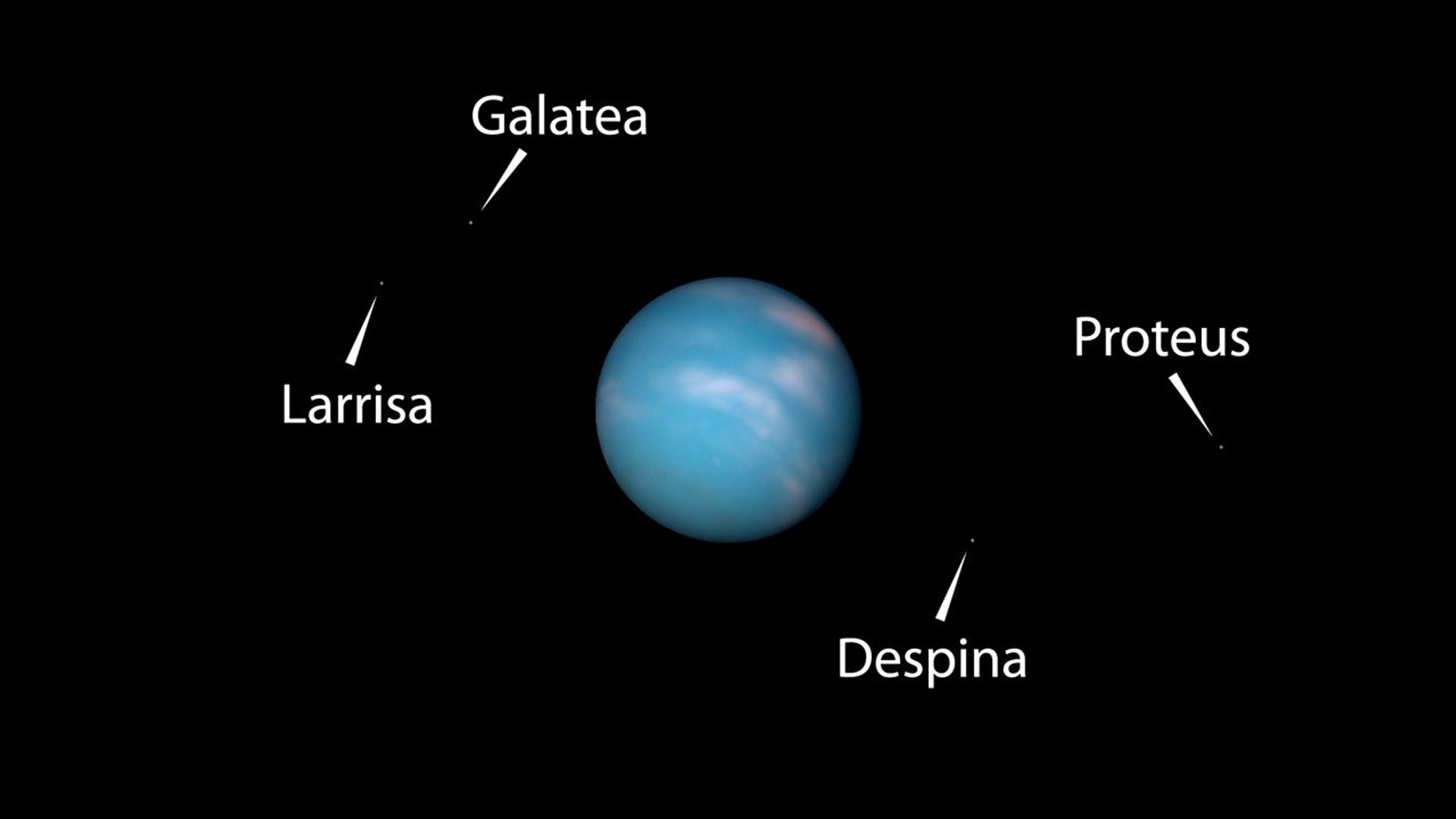
Hubble Observes Changes in Neptune's Atmosphere (Annotated)
Our solar system's most distant major planet, Neptune, has arrived at the same location in space where it was first discovered 165 years ago. To commemorate the event, NASA's Hubble Space Telescope has taken images of the blue-green giant planet. Neptune was first discovered 165...
Share
Details
Claire Andreoli
NASA’s Goddard Space Flight Center
Greenbelt, Maryland
claire.andreoli@nasa.gov

